The Comprehensive Lead Generation Guide To Grow Your Business
Do you know that according to 68% of marketers, lead generation is one of the toughest challenges they face? Are you one of them as well? While it is a task, you can win it if you know how to do it. If you are new to lead generation, don’t worry. We have you covered in our lead generation guide.
You’ll learn how to maximize your reach and get the most out of your efforts. Plus, we’ll cover topics such as lead generation funnels, ways to generate leads, capture them, and qualify them effectively. Also, find the top strategies to generate leads effectively.
Get ready for a fully-packed B2B lead generation guide that will make you a pro.
Table of Contents
- What Is A Lead?
- What Are The 6 Types Of Leads?
- What Is Lead Generation?
- Why Do Most Businesses Struggle with Lead Generation?
- Inbound Lead Generation Vs Outbound Lead Generation
- Why Is Lead Generation Important For Your Business?
- What Is A Lead Generation Funnel?
- How To Generate Leads?
- How To Capture Leads?
- How To Qualify Leads?
- How To Generate SaaS Leads?
- Lead Generation vs. Brand Awareness- The Difference
- Best Lead Generation Strategies & Tips
- Metrics To Monitor For Lead Generation
- Top Lead Generation Software
- Lead Generation Trends To Watch Out For
- How to Use SalesBlink?
What Is A Lead?
Let’s begin our lead generation guide with understanding what a lead is.
A lead is a potential customer or client who has expressed an interest in your product or service. In marketing, it generally refers to people who have either filled out a form, subscribed to your newsletter or contacted you directly.
It is the first step in the sales process, and the salesperson’s job is to nurture the lead and turn it into a paying customer. Leads can come from various sources, such as cold calls, client referrals, networking events, and online advertising. The salesperson needs to qualify the lead and determine if they are a good fit for the company. This includes assessing their needs, budget, and time frame.
What Are The 6 Types Of Leads?
Now let’s understand the types of leads in this B2B lead generation guide. Here are the 6 types:
1. Cold
Cold leads are potential customers that have yet to be contacted or engaged by a salesperson. You require to put in more effort to convert these leads into paying customers. Salespeople must contact cold leads, build relationships, and try to understand their needs to start a conversation and eventually close the sale. Cold leads are an essential part of any successful sales strategy and can help companies reach new customers and increase sales.
2. Hot
Hot leads are sales prospects that are highly likely to become customers. These are usually people who have already expressed an interest in a product or service and are actively looking to purchase. Hot leads can come from many sources, including online marketing campaigns, word of mouth, referrals, and customer reviews. Hot leads are valuable to sales teams because they require less effort to convert into sales. They are also more likely to result in long-term customers since they have already shown an interest in the product. To maximize the value of hot leads, sales teams should act quickly to reach out to these prospects and offer them the best possible deal.
3. Warm
Warm leads are in between hot and cold leads. They are more likely to convert than cold leads because they have already expressed interest in what the company has to offer. You can identify warm leads through several methods, including customer surveys, website visits, and lead scoring. Companies often use these methods to create a list of warm leads that they can target with personalized emails or phone calls. By targeting warm leads, sales teams can improve their chances of making a sale and increase their conversion rates.
4. IQL
You can call leads who provide their contact details in return for valuable resources as information qualified leads. The resource can be an ebook, whitepaper or checklist. It is worth noting that IQLs don’t know much about the product or service you offer.
5. MQL
Marketing Qualified Leads (MQLs) are leads that the marketing team has identified as having a higher likelihood of becoming customers. To be considered an MQL, a lead has to meet certain criteria, such as being in the right industry, having sufficient budget, and an interest in the product. Once identified as an MQL, the marketing team passes on the lead to the sales team, who will then follow up with the lead and attempt to close the sale.
6. SQL
Sales Qualified Leads (SQLs) are potential customers that have the potential to become actual customers. They can move forward in the sales process. In other words, these leads are likely to turn into customers. A customer may be qualified as an SQL based on their demographics, company size, industry, and other criteria that indicate they could be a good fit for the product or service.
Let’s move forward in this lead generation guide.
What Is Lead Generation?
Lead generation is the process of identifying and acquiring potential customers for a business. It involves the use of various tactics such as email marketing, search engine optimization, content marketing, and social media marketing to attract potential customers to your business.
The goal of lead generation is to attract leads and turn them into customers by providing them with the information they need to make an informed decision about your product or service. By targeting the right prospects and giving them relevant information, marketers can increase the chances that a lead will become a paying customer.
Lead generation is for businesses of all sizes, from small startups to large enterprises. Using effective lead generation strategies, businesses can convert more leads into paying customers, increasing their sales and profits.
Now, let’s move ahead in this lead generation guide.
Why Do Most Businesses Struggle with Lead Generation?
In this lead generation guide, it is time to understand why businesses struggle with generating leads.
Lead generation can be a tricky and costly process for businesses since it requires a strategic and tailored approach. However, the failure to generate leads can often be because of the following:
- Lack of proper understanding of customer needs
- Limited budget
- Inadequate resources
- Lack of the necessary expertise
- Being unaware of the best practices and strategies for effective lead generation
- Poor alignment between marketing and sales teams making leads fall through the cracks
- Pressure to deliver results in a short time frame
- A rushed approach and poor execution
These factors can stand in the way of successful lead generation, and businesses can struggle to find the right approach to generate leads, resulting in wasted resources and missed opportunities.
As a sales professional, it’s important to understand the challenges behind lead generation and to develop a tailored strategy to drive success. With an in-depth understanding of your customer, the right budget and resources, as well as the right expertise and strategies, you can maximize your lead generation efforts and create a successful business.
Inbound Lead Generation Vs Outbound Lead Generation
Time to move ahead in this lead generation guide and know the difference between inbound and outbound methods of generating leads.
Inbound lead generation focuses on attracting potential customers through content marketing, search engine optimization, and social media marketing. This tends to be more cost-effective and requires less manual effort, as it relies on potential customers to find you.
On the other hand, outbound lead generation is active and proactive. It involves outreach to potential customers through cold calls, direct email marketing, and other tactics. It’s more expensive, but it can be effective for quickly getting in touch with potential customers.
Understanding the differences between inbound and outbound lead generation can help you decide which one is better for your business. Whether you choose to invest heavily in inbound lead generation or focus on outbound tactics, it’s important to have a clear strategy in place.
Ultimately, it would be best if you used both inbound and outbound lead generation together to generate the best leads. Inbound lead generation helps to create brand awareness and build trust, while outbound lead generation helps to push potential leads to the top of the sales funnel. As a professional, it is essential to understand both of these methods to create a comprehensive strategy for lead generation.
Why Is Lead Generation Important For Your Business?
Lead generation is essential for businesses to grow, as it helps to identify and nurture new customers and business opportunities.
By nurturing leads, companies can convert them into customers or referral sources. Lead generation helps to increase sales, build relationships, and strengthen customer loyalty. It helps to create a pipeline of potential customers for your business, which can boost your bottom line.
Additionally, it helps to build credibility and visibility for your business. What’s more, it helps to create a competitive edge and ensures that your business stays ahead of the competition.
Overall, lead generation helps businesses increase their customer base and revenue, increase brand awareness and helps to establish a strong presence in the market.
You will learn a lot more in this lead generation guide.
What Is A Lead Generation Funnel?
To understand the lead generation funnel, you must know the sales funnel stages. These are the stages the prospect goes through during the journey to become a customer. Let’s look at them in this lead generation guide.
Sales Funnel
A sales funnel has three stages – TOFU, MOFU, BOFU.
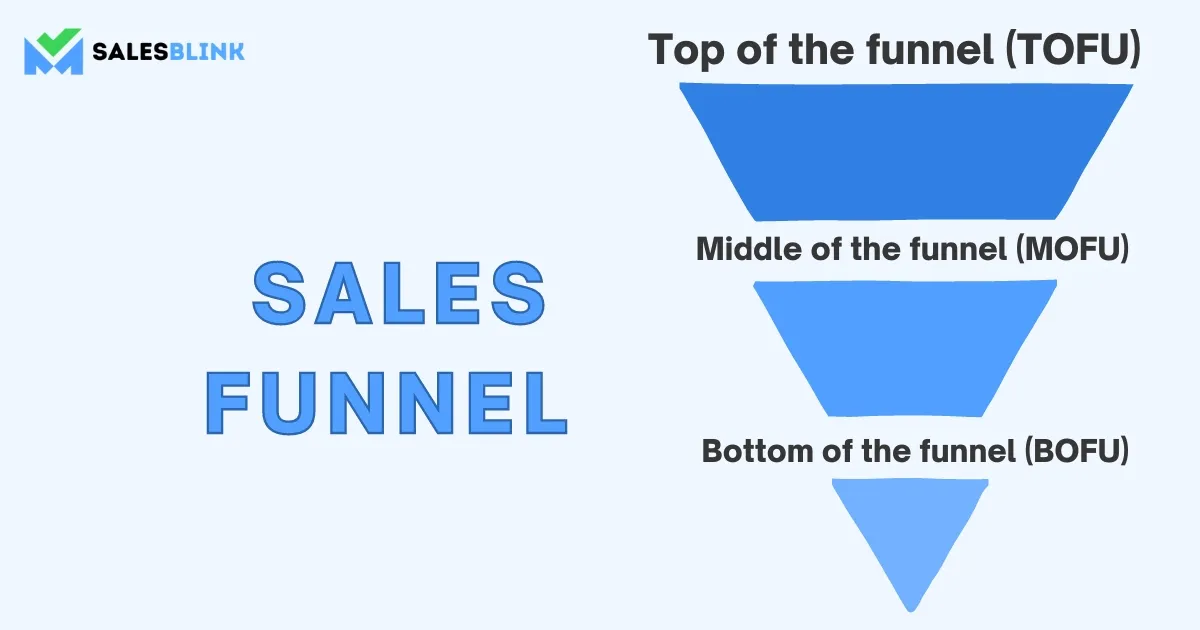
Top of the funnel (TOFU)
The top-of-the-funnel (TOFU) is the first stage of the sales process. It involves creating awareness of your product or service and building an audience of potential customers. The focus is on driving traffic to your website or landing pages at this stage. The goal is to create brand recognition and educate potential customers on the benefits of your product or service.
To be successful at the TOFU, it’s essential to create content that resonates with your target audience and to use various methods such as search engine optimization, pay-per-click, social media, email marketing, and influencer partnerships. By taking the time to understand your target audience and creating a solid TOFU strategy, you can ensure that your sales process is effective and efficient.
Middle of the funnel (MOFU)
The middle-of-the-funnel, or MOFU, stage in sales is the stage when potential customers are actively researching and evaluating their options. At this stage, customers are no longer just gathering information but are actively trying to decide which product or service best meets their needs. This stage aims to move the customer closer to making a purchase decision by providing them with relevant, useful content that will help them make an informed decision. This could include content such as product comparisons, videos, podcasts, webinars and more. It’s also important to ensure that your sales team is available to answer any customer questions. By providing helpful and informative content, you can build trust with potential customers and increase their likelihood of making a purchase.
Bottom of the funnel (BOFU)
The bottom-of-the-funnel stage in sales is the final step of the customer journey. At this stage, the customer is ready to make a purchase and only needs a few final details before they pull the trigger.
This is the optimal time to close the deal and ensure that the customer is satisfied with their purchase. To do this, it is important to provide the customer with all the information they need to make an informed decision. This may include product features and benefits, pricing options, and customer service information. Also, try offering live demos, trials and consultations.
It is also essential to be available to answer any questions they may have. By providing a great customer experience at this stage, you will be more likely to turn a potential customer into a lifelong customer.
Lead Generation Funnel
Now that you know about the stages of the sales funnel, you will understand the lead generation funnel better.
Basically, it is the top part of your sales funnel where the aim is to get the target audience’s attention, provide them with a lead magnet, persuade them to visit the lead magnet’s landing page and provide their contact details, such as their email address or phone number.
After that, you can take the leads down the sales funnel.
How To Generate Leads?
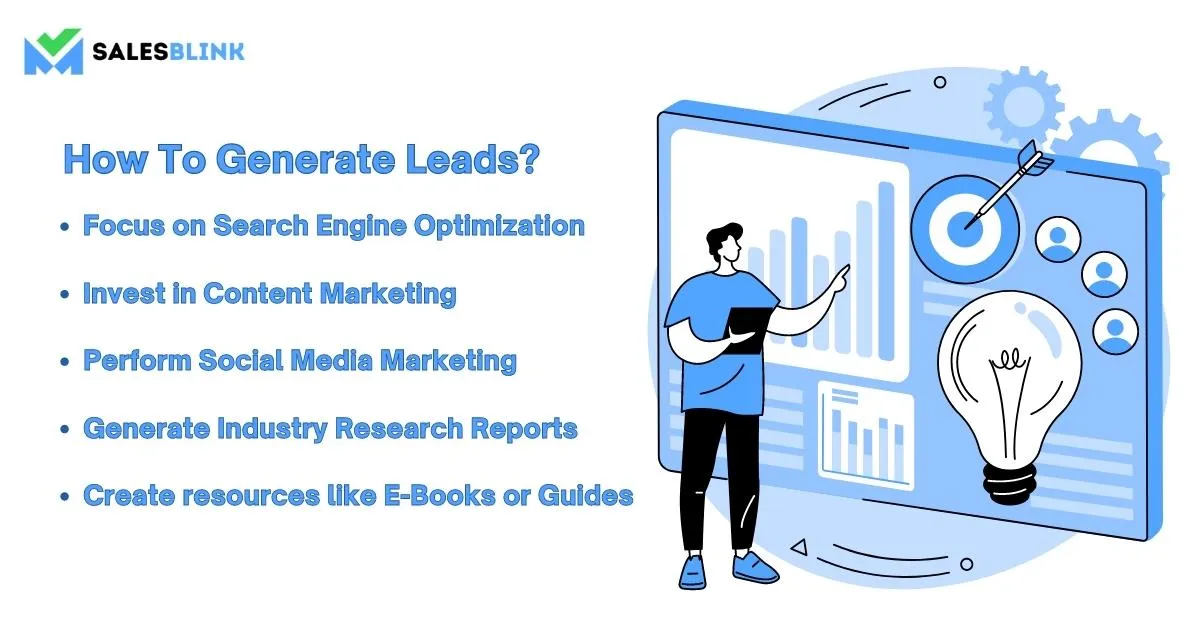
It is now time to know how you can generate leads in this lead generation guide,
1. Focus on Search Engine Optimization
Search engine optimization (SEO) is a crucial strategy for generating leads and driving website traffic. SEO involves optimizing your website and its content to rank higher in search engine results.
You need to target specific keywords related to your business and ensure they are included in relevant web pages. You must also create interesting and informative content to maximize your website’s user experience. Additionally, you should ensure that your website is compatible with mobile devices, as more and more people are accessing the internet on their phones and tabs. By focusing on SEO, you can get more visibility for your business and attract new leads.
2. Invest in Content Marketing
Content marketing is a powerful strategy for generating leads and driving sales. Content marketing is about creating valuable content that speaks to your target audience and helps them solve their problems. This can include blog posts, videos, podcasts, webinars, e-books, and more.
Content marketing can effectively attract new customers and build relationships with existing ones when you do it correctly. It can also help you position yourself as an expert in your field, making generating leads and closing more sales easier. In short, investing in content marketing can be a great way to grow your business.
3. Perform Social Media Marketing
Social media marketing is an effective way to generate leads for your business. By creating engaging and informative content, you can reach a wider audience and gain their interest in your product or service. You can also use targeted ads to reach potential customers who may be interested in what you have to offer.
Furthermore, by actively engaging with your followers, you can create relationships and build trust with them, leading to more sales in the long run.
Lastly, by monitoring the performance of your social media campaigns, you can determine which strategies are working best and adjust your tactics accordingly. With the right approach, social media marketing can be great for generating leads and growing your business.
4. Generate Industry Research Reports
Generating industry research reports can be a great way to generate leads, as it provides potential customers with valuable insight into your industry. The key to an effective research report has the right data and analysis that provides readers with actionable information. First, gather data from reliable sources such as industry reports and surveys to create an industry research report. Then analyze the data to look for trends and meaningful insights. Finally, present the data in an easy-to-understand way that explains the findings and provides actionable advice. By creating an industry research report that is both informative and helpful, you can not only generate leads but also establish yourself as a trusted source of information in your field.
5. Create resources like E-Books or Guides
Creating digital resources like e-books or guides is a great way to generate leads. You can use these resources to attract potential customers and increase awareness of your brand. By providing valuable information to customers, you help them make informed decisions. To create effective resources, start by determining what topics would interest your target audience. Do ensure that they are well-researched, informative and entertaining. Once you’ve created your resources, you can use social media and other digital channels to promote them and drive traffic to your website. You can also offer these resources as part of an email campaign or as lead magnets. Offering valuable resources is a great way to generate leads and build relationships with potential customers.
How To Capture Leads?
Now let us take a look at the top ways of lead capture in this lead generation guide,
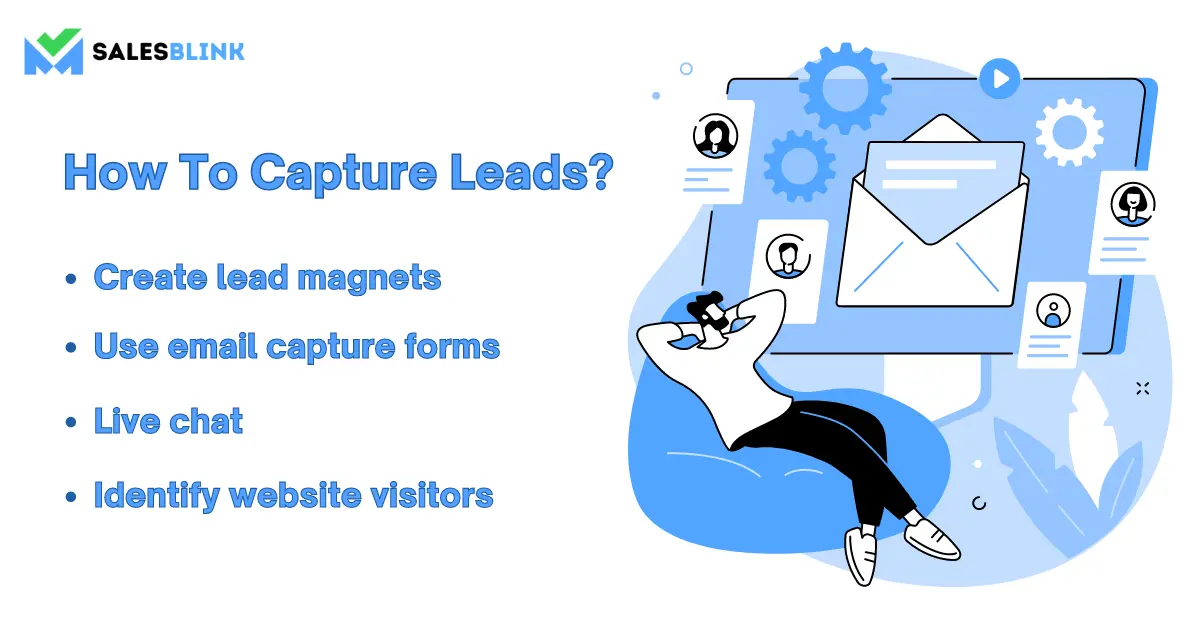
1. Create lead magnets
Lead magnets are a great way to capture leads and build your email list. For the uninitiated, a lead magnet is a free offer you provide in exchange for someone’s contact information, such as their email address.
Common examples of lead magnets include ebooks, white papers, webinars, and templates.
To create an effective lead magnet, you must first identify your target audience’s needs. For example, what kind of information would they find valuable? Once you have identified their needs, you can create a lead magnet that meets those needs.
After creating the lead magnet, promoting it widely through social media, email campaigns, and other channels is important. You can capture leads and build your audience quickly by creating an attractive and useful lead magnet.
2. Use email capture forms
By placing a capture form on your website, you can collect valuable information about potential customers, such as their name, email address, and any relevant questions about your product or service. You can use this information to nurture leads down the sales funnel and eventually convert them into customers. Additionally, email capture forms can help you build an email list of potential customers that you can use for future marketing campaigns. If you want to grow your business, it’s worth considering using email capture forms to capture leads.
3. Live chat
Live chat is the best for capturing leads. It allows you to engage directly with potential customers in real time, providing them with immediate answers to their questions and addressing their needs quickly and efficiently. This makes it easier to build relationships with customers and encourages them to take the next step in the buying process. I
In addition, live chat is a great way to collect customer data such as email addresses, phone numbers, and other contact information. You can use this data to nurture leads down the funnel further and increase sales. Using live chat lets you give potential customers the attention they need, capture leads more effectively, and ultimately boost your bottom line.
4. Identify website visitors
To capture leads, you need to be able to identify website visitors and capture their information. One way to do this is using website analytics to track visitor behavior. This can include how long they spend on the site, what pages they visit, and what links they click on.
You can also use remarketing campaigns to reach out to visitors who have already interacted with your website in some way. This way, you can build a list of leads you can target with more tailored campaigns.
How To Qualify Leads?
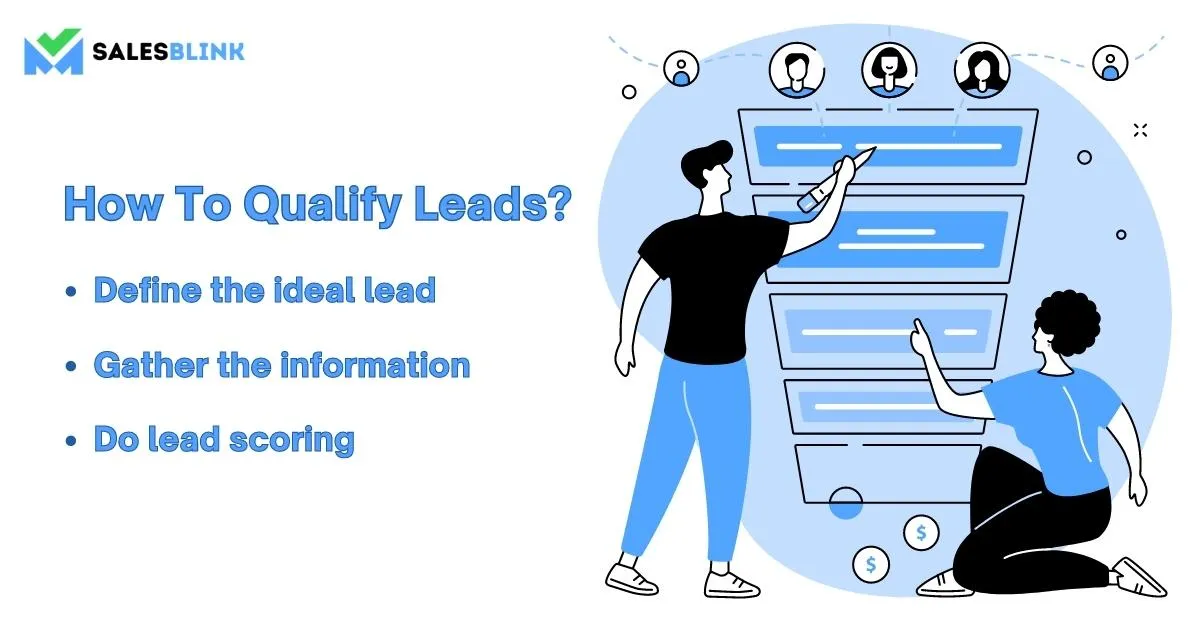
After successfully capturing leads, it is time to learn how to qualify leads in this lead generation guide. Here’s how you can proceed,
1. Define the ideal lead
The ideal lead has the potential to become a customer. To qualify leads, you must first determine what criteria make a lead ideal. This can include characteristics like their geographical location, industry, job title, and size of the company they work for. It would help if you also looked at other factors, such as whether they are interested in your product or service, the amount of budget they have available, and the timeline of their decision-making process. By gathering this information, you can better understand who your ideal leads are, and then target them with your marketing efforts. This will help you to focus your time and resources on leads that are likely to convert into customers.
2. Gather the information
Gathering information about potential customers can help you determine if they are interested in your product or service and if they are likely to become paying customers. There are several methods you can use to gather this information.
First, you can use surveys and questionnaires to understand leads’ needs and interests better. You can also look at publicly available data, such as websites and social media accounts, to get an idea of their background, interests, and habits. Lastly, you can talk to leads directly to better understand their needs and desires. You can do this by phone, email, or in person.
By gathering all the relevant information about your leads, you can then qualify them to determine which ones are likely to be the most successful customers. This will help you focus your efforts on the leads that are most likely to purchase your product or service.
3. Do lead scoring
Businesses use lead scoring to evaluate the quality of their leads. It helps them prioritize their efforts and focus on the leads that have higher chances of converting. Lead scoring assigns a numerical value to each lead based on their characteristics and behavior. This value is then compared against a predetermined threshold to determine whether or not the lead is qualified.
Lead scoring helps businesses identify which leads are worth pursuing and which ones they should ignore. As already said, it also helps them allocate resources more efficiently, as they can focus their efforts on leads that are more likely to result in a sale. Lead scoring also helps them better understand their customer base, as they can use the data to track trends and analyze customer behavior.
How To Generate SaaS Leads?
Generating leads for a SaaS business is a critical component to growing the business and ultimately maximizing revenue. The most successful SaaS businesses understand and capitalize on opportunities to attract and nurture leads. Here are several strategies that you can use to generate SaaS leads:
1. Create content that is interesting and relevant to your target audience. This can include website content, blog posts, ebooks or whitepapers, infographics, videos, podcasts, and more.
2. Leverage social media channels to share content, interact with potential customers, and answer their questions.
3. Research and target keywords related to your service and use them in your content and social media posts.
5. Generate leads by offering free trials, discounts, and incentives.
6. Identify influencers in your industry and collaborate with them to reach potential customers.
7. Track analytics to measure success and optimize future campaigns based on what is working.
By following these strategies, SaaS businesses can generate quality leads, nurture them into becoming customers, and increase their overall revenue.
Let’s move forward in this lead generation guide.
Lead Generation vs. Brand Awareness- The Difference
Lead generation and brand awareness are different marketing strategies with different goals and require different approaches.
In lead generation, the focus is on finding potential customers or leads interested in a product or service. You do this typically through targeted ads, email campaigns, and other forms of digital advertising. It is more focused on the short-term and is more targeted and measurable.
On the other hand, brand awareness is about creating a positive impression of a company or product. You usually do this through content marketing, online engagement, and other forms of traditional advertising. The focus here is on the long term.
While lead generation focuses on finding customers and making sales, brand awareness focuses on creating a positive, lasting impression of a company.
Despite the differences, lead generation and brand awareness are essential components of a successful marketing strategy. Both strategies are necessary for businesses, but depending on your business goals, one may be more important than the other.
Best Lead Generation Strategies & Tips
It is now time to learn the top tactics to generate leads in this lead generation guide. Let’s take a look at them.
1. Provide opt-in opportunities
Opt-in offers are a great way to generate leads for your business. An opt-in offer gives visitors to your website or social media pages the opportunity to sign up for emails, newsletters, or other types of content. This content can be anything from special discounts and promotions to educational resources and product information. By providing opt-in offers, you can build a list of engaged leads that you can target later with relevant marketing messages.
It’s essential to ensure that your opt-in offers are attractive and easy to understand. You should also have the right follow-up strategy in place to maximize the effectiveness of your lead-generation efforts. With a good opt-in offer and the right follow-up strategy, you can generate high-quality leads that can help your business grow.
2. Perform A/B test
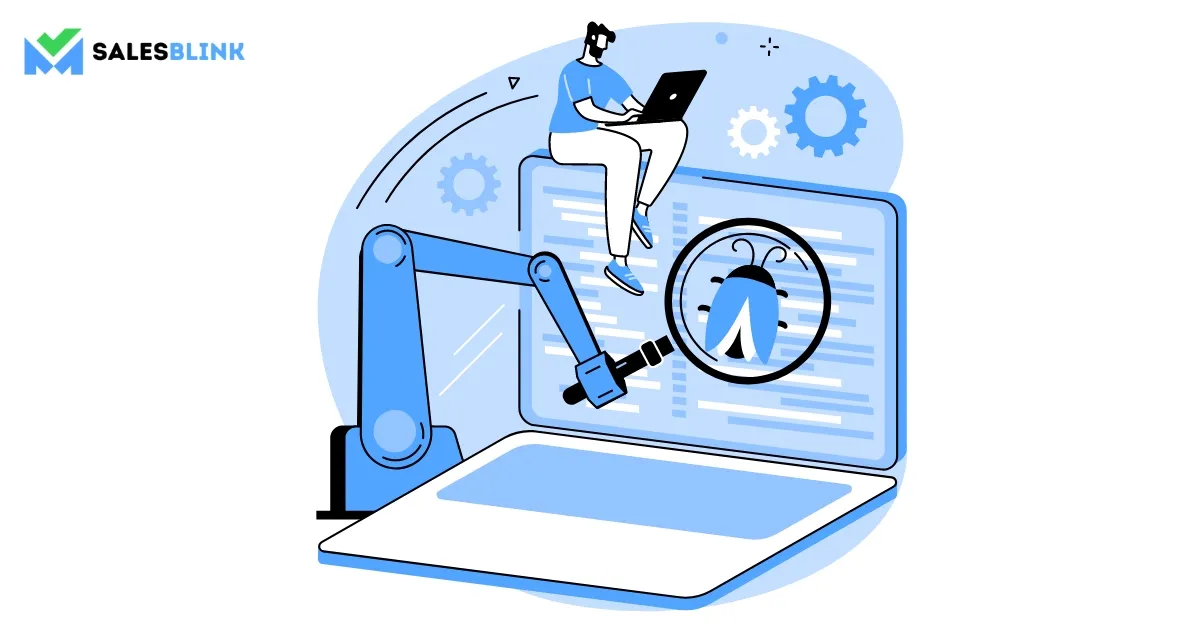
A/B testing is a popular lead generation strategy that involves comparing two versions of a website or landing page to see which produces the best results. You can do this by randomly showing one version to some visitors and the other one to other visitors, then measuring the performance of each. A/B testing allows you to quickly and easily identify which elements of your page are working and which are not.
For example, you could test different headlines, images, or layout options to see which generates the most leads. You can also use A/B testing to test different offers or calls to action to see which results in the most conversions. A/B testing can be a powerful tool for improving your lead generation efforts. Still, it’s important to remember that the results may vary depending on your niche, target audience, and other factors.
3. Provide great offers
Offers can come in many forms, such as discounts on products or services, free shipping, or even free samples. Not only do these offers attract potential customers to your business, but they also give them the incentive to buy. When coming up with offers, you must consider what your customers would find valuable. Consider offering something they wouldn’t be able to find anywhere else, or make sure your offer is better than your competitors. Additionally, make sure your offers are easy to understand and that they don’t require too much effort from the customer. This will make it more likely that customers will take advantage of your offer and become paying customers. With the right offers, you can generate leads and grow your business.
4. Improve your ads
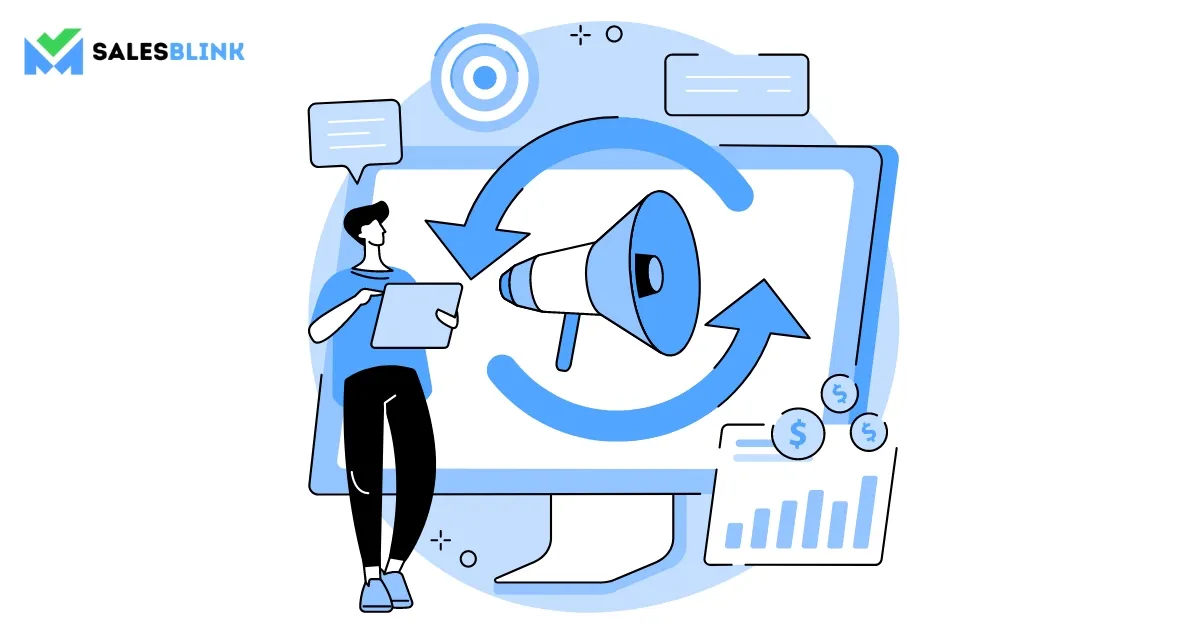
To maximize your leads, you must ensure that your ads are as effective as possible. Here are a few tips to help:
- Make sure you target your ads to the right audience. You must ensure you are reaching people who are interested in what you are offering.
- Make sure your ads are visually appealing and easy to understand. Use eye-catching visuals and clear, concise copy to grab the attention of your target audience.
- Include a clear call to action in your ads. Tell viewers exactly what you want them to do, whether signing up for a newsletter or downloading an app.
- Track and analyze the performance of your ads. Pay attention to metrics like click-through rate and cost per lead to determine which ads are working best and which need improvement.
5. Focus on remarketing
Remarketing is a powerful lead generation strategy that can help businesses reach their target audience, convert prospects into customers, and increase overall sales. It works by targeting ads to people who have previously visited your website or interacted with your brand in some way. This targeting allows you to build trust with potential customers and remind them of your product or service, which can lead to increased conversions. Additionally, you can use remarketing to nurture leads and move them further down the sales funnel.
To get started with remarketing, you will need to create ads and set up campaigns using a remarketing platform like Google Ads. You can also use retargeting pixels to track visitors on your website and serve them relevant ads on other websites they visit. With a comprehensive remarketing strategy in place, you can focus on converting leads and generating more sales.
6. Provide a consistent message
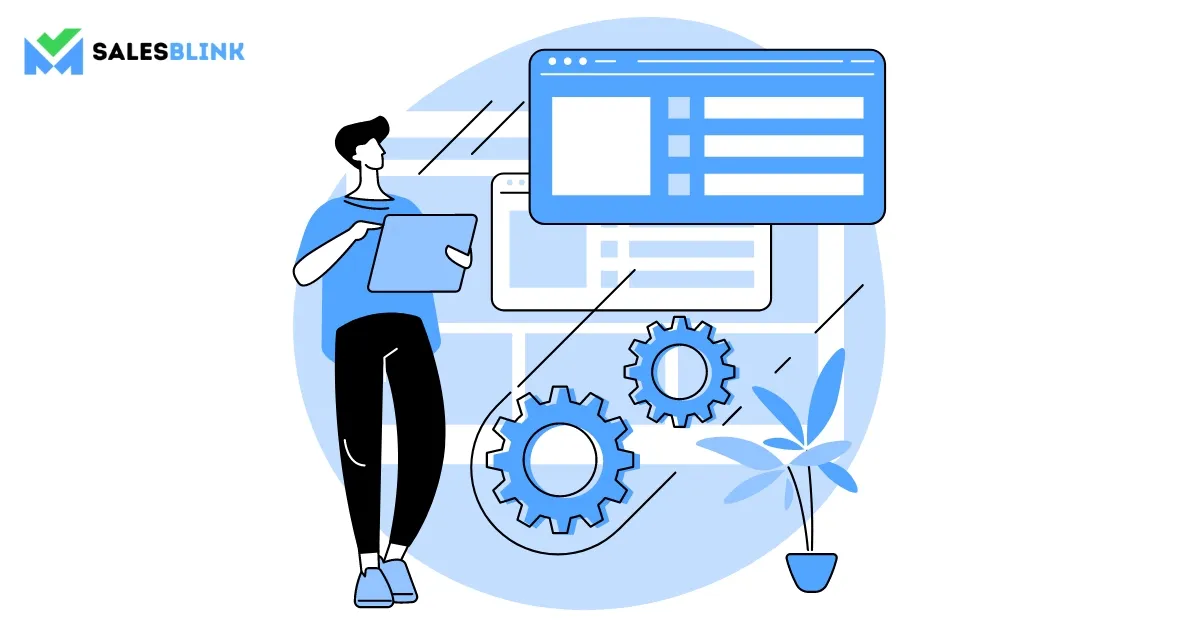
When it comes to lead generation, consistency is key. To generate leads effectively, it is important to provide a consistent message across all of your marketing channels. This means delivering the same message with the same tone and visuals to create a unified brand experience. It is also essential to ensure that you tailor your message to the right audience. It would help if you targeted potential leads with messaging that speaks directly to them and their needs.
Additionally, it is crucial to focus on creating engaging and informative content. This can help to build trust and ensure that potential leads are more likely to follow through with a purchase or other desired action. By providing a consistent message, you can ensure that your lead-generation strategy is effective and successful.
7. Use social media
There’s no surprise that social media platforms such as Facebook, Instagram, Twitter, and LinkedIn offer a range of opportunities for businesses to connect with their target audience. For example, you can create content engaging your followers, such as videos and blog posts. You can share this content with a larger audience, which can help increase visibility and brand awareness.
Additionally, you can use social media to run targeted ads that can reach specific audiences and generate leads. Finally, you can use social media to create relationships with your followers, building a base of loyal customers who you can nurture into leads. Make sure to monitor your progress and adjust your strategy accordingly to optimize your results.
With the right approach, social media can be a powerful medium for generating leads and growing your business.
8. Be flexible

For businesses looking to succeed in a competitive market, staying on top of industry trends is essential. This means being open to new technologies and methods, such as AI-driven lead scoring or automated email campaigns. It also means staying up-to-date on the latest trends in digital marketing, such as personalization, mobile optimization, and chatbots.
Additionally, being flexible to trends means being open to trying out new tactics and assessing their effectiveness. For example, if a new social media platform pops up, it’s worth exploring its potential for your lead generation efforts. Or, if a new type of content generates buzz, you may want to create something similar for your audience. The key is to be flexible, open-minded, and willing to try new things. By staying on top of trends and experimenting with different strategies, you can ensure that you succeed at lead generation.
Let’s move ahead in this lead generation guide.
Metrics To Monitor For Lead Generation
It is now time to take a look at the metrics you should consider monitoring in this lead generation guide.
1. Click-Through Rate (CTR)
The click-through rate (CTR) metric is a crucial metric in lead generation. It measures the effectiveness of a lead generation campaign by tracking how many people clicked on an ad or link. Using CTR, you can measure the success of your campaigns and adjust them accordingly.
The CTR is calculated by dividing the number of clicks on the link or advertisement by the total number of impressions. For example, if you had 100 impressions and 5 clicks, your CTR would be 5%.
The CTR is a valuable metric as it helps one understand how successful their campaigns are and how effective their ads are at reaching the right audience. It also provides insight into which campaigns are working and which ones need to be adjusted. By tracking and optimizing this metric, you can ensure that your lead generation campaigns are as successful as possible.
2. Conversion Rate
Conversion rate is the percentage of visitors to a website or landing page who complete the desired action, such as signing up for a newsletter or making a purchase. A higher conversion rate generally indicates that a company’s lead generation efforts are successful, while a lower rate can point to areas that need improvement.
To calculate the conversion rate, divide the number of conversions (such as sign-ups or purchases) by the number of visitors. This will give you the percentage of visitors who completed the desired action. Conversion rate is a key metric for understanding your lead generation efforts’ effectiveness. You should monitor it periodically to ensure you are able to get the most out of your campaigns.
3. Time to Conversion
Time to Conversion is an essential metric for lead generation. It measures the time required to turn a website visitor into a lead. You can calculate it by dividing the total time people spend on your website by the total number of leads.
This metric is important because it helps businesses track how quickly leads are converting into customers, which you can use to assess the effectiveness of their lead-generation efforts.
Knowing the time-to-conversion metric can help businesses identify potential issues in their lead-generation process, such as insufficient lead nurturing or a lack of urgency in their sales process. You can also use it to measure the performance of different lead sources and to compare the effectiveness of different lead generation strategies.
4. Return on Investment (ROI)
Return on Investment (ROI) is a metric used to measure the overall effectiveness of a lead generation campaign.
You can calculate it by dividing the total profit earned from the campaign by the total cost of the campaign. You can use this number to compare the efficiency of different campaigns.
For example, if a lead generation campaign costs $100 and generates $200 in revenue, then the ROI would be 100%. This means that you earn two dollars for every dollar invested in the campaign.
ROI is a valuable metric for lead generation because it allows marketers to assess the profitability of their campaigns. It is also useful for evaluating potential investments, as it can help marketers decide whether or not a particular lead-generation campaign is worth pursuing.
5. Time on Page
Time on page is a metric used to measure how much time a user spends on a given page. This metric can evaluate the effectiveness of lead generation pages, as it provides insight into how compelling the page’s content is.
If users spend more time on the page, it suggests that they are engaged with the content and are more likely to take action. Conversely, if users quickly leave the page, it indicates that the content is not engaging them and may need to be adjusted. Time on page is, therefore, an important metric for evaluating the success of lead generation pages and ensuring that they are compelling enough to convert visitors into leads.
6. Cost per Lead
Cost per Lead (CPL) is a metric used to measure the effectiveness of lead generation campaigns. You can calculate it by dividing the total cost of the campaign by the number of leads generated.
This metric is essential for businesses because it allows them to track the efficiency of their lead-generation efforts. If a company has a high CPL, it indicates that its campaigns are too expensive and not generating enough leads. On the other hand, a low CPL suggests that the campaigns are working well and producing a good number of leads. By tracking this metric, businesses can adjust their lead generation strategies to maximize their return on investment.
7. Lead Generation Rate by Channel
Lead generation rate by channel is a metric used to measure the effectiveness of different lead generation channels. You can calculate it by taking the number of leads generated from a given channel and the total number of impressions or visits to that channel.
This metric can compare the performance of different channels and determine the most effective ones for lead generation.
For example, if a company has a lead generation rate of 10% from email marketing and 7% from paid search, they may focus more resources on email marketing as it is more effective. You can use the generation rate by channel metric to inform decisions about budget allocation and help identify areas where lead generation efforts need improvement.
So, that was how to measure lead generation. Let’s now move ahead in this lead generation guide.
Top Lead Generation Software
Here’s a look at the top tools that can help you with lead generation. Using technology to automate processes will reduce busy work and give you more hours from your workday. If your goal is to increase productivity, look no further!
1. LinkedIn Sales Navigator
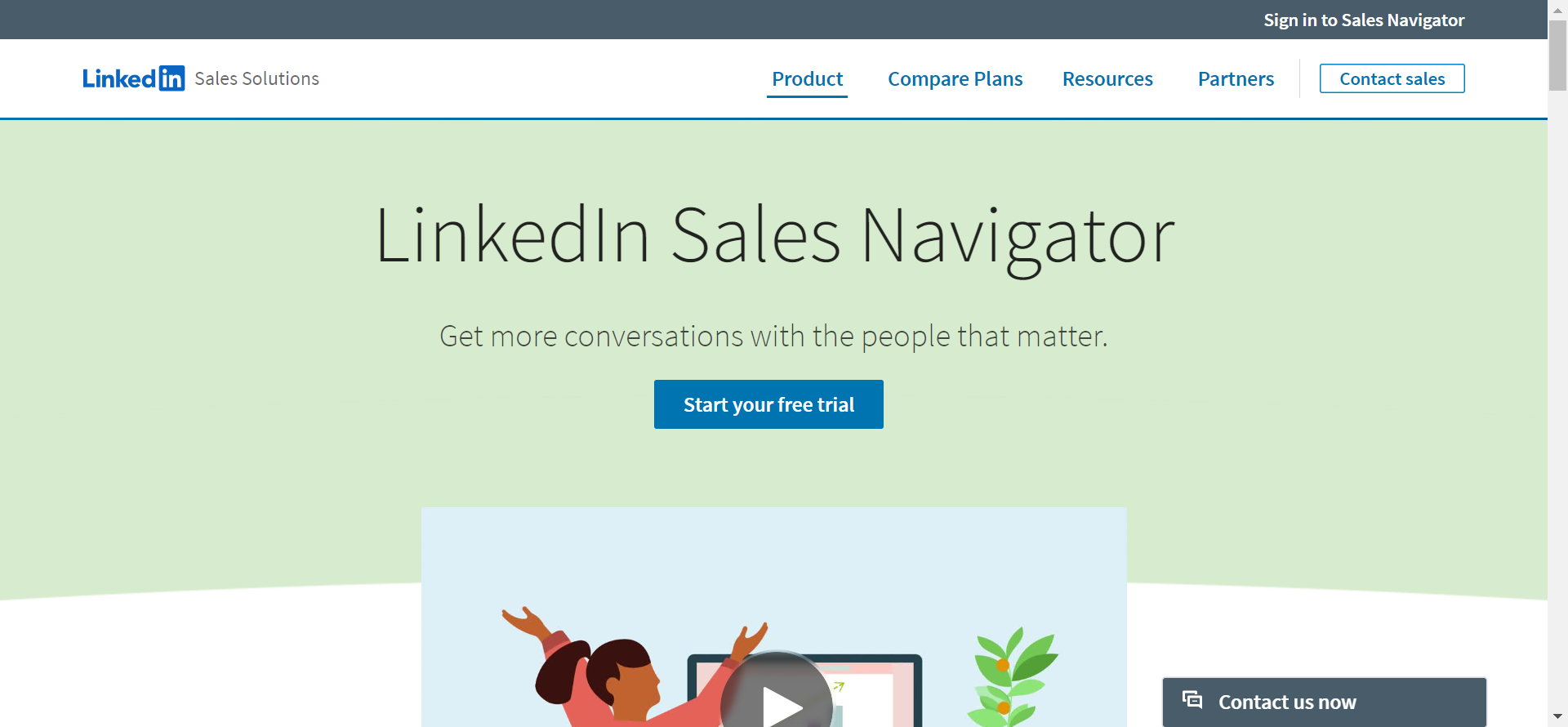
When it comes to the best LinkedIn lead generation software, nothing can be better than the LinkedIn Sales Navigator. The tool gives you valuable lead recommendations which are then automatically saved in your CRM.
With real-time sales updates, you can make informed decisions and ensure that you don’t miss out on important opportunities. The tool also provides a way to keep your contact data organized and secure with internal tags and notes.
Pricing –
The LinkedIn Sales Navigator software comes with four pricing tiers:
- Core: $79.99/user/month
- Advanced: $125/iuser/month
- Advanced Plus: Available on Request
2. Unbounce
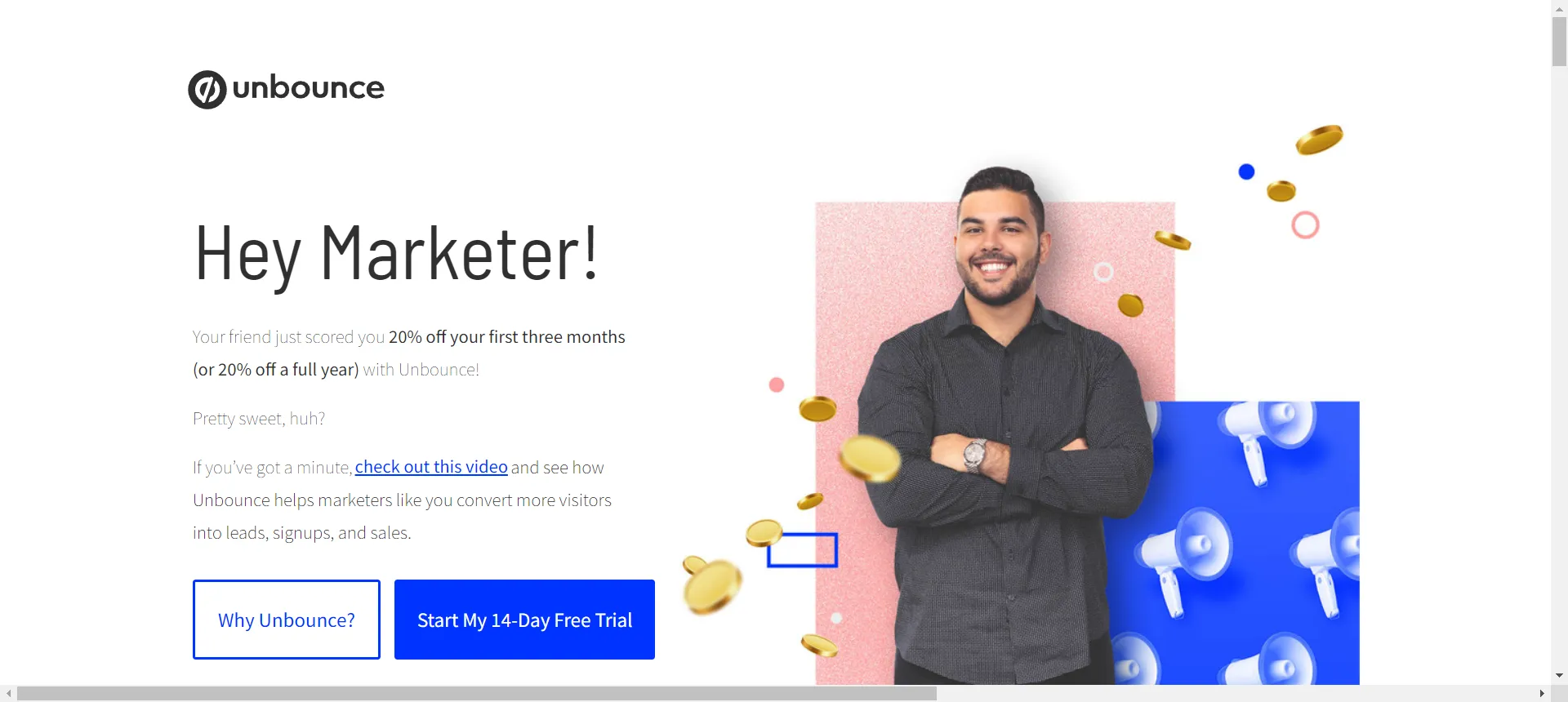
Unbounce is a popular lead landing page platform for SaaS businesses that want to create custom landing pages easily. The tool has a user-friendly drag-and-drop landing page builder to help you create pages with minimal effort. It is also possible to perform A/B tests to understand what kind of landing pages perform better. The main highlights of Unbounce include features like Conversion Intelligence and Smart Traffic. Using the tool, you can create several landing pages in bulk effortlessly. The other features worth mentioning include analytics as your management, real-time editing, and customizable templates.
Pricing – The paid plan starts from $80 a month.
3. Qualaroo
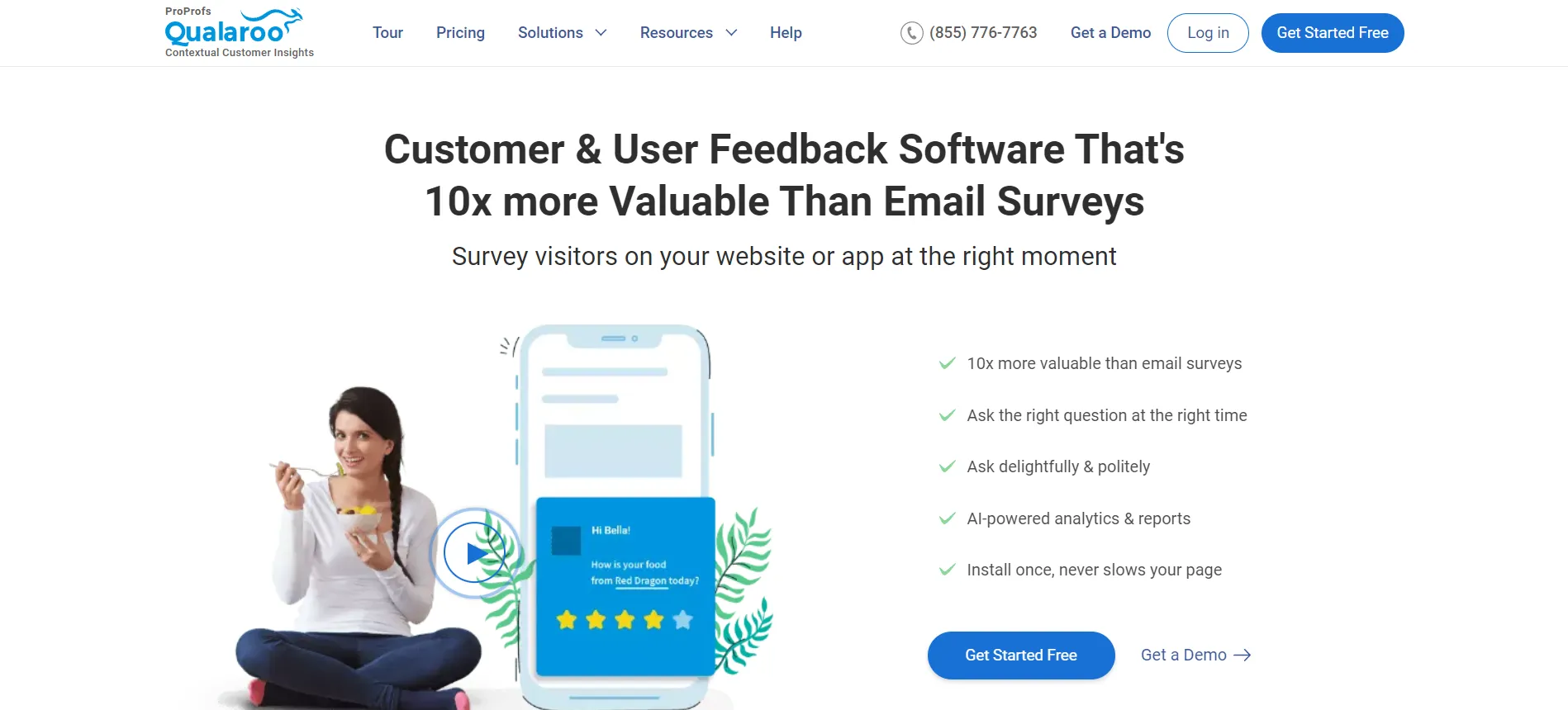
Qualaroo is a customer feedback tool using which you can get feedback and analyze it. It is perfect for everyone, from small businesses to large enterprises. As a visitor lands on a website, you can display a popup asking questions to them. They look similar to chatbots that ask for user preferences. It is possible to create a mini-customer survey. It is easy to analyze the data using AI in the form of sentiment or text analysis.
The lead generation features of the tool include analytics, easy third-party integrations, and email marketing tools.
Pricing – The paid plan starts from $100 a month.
4. Picreel
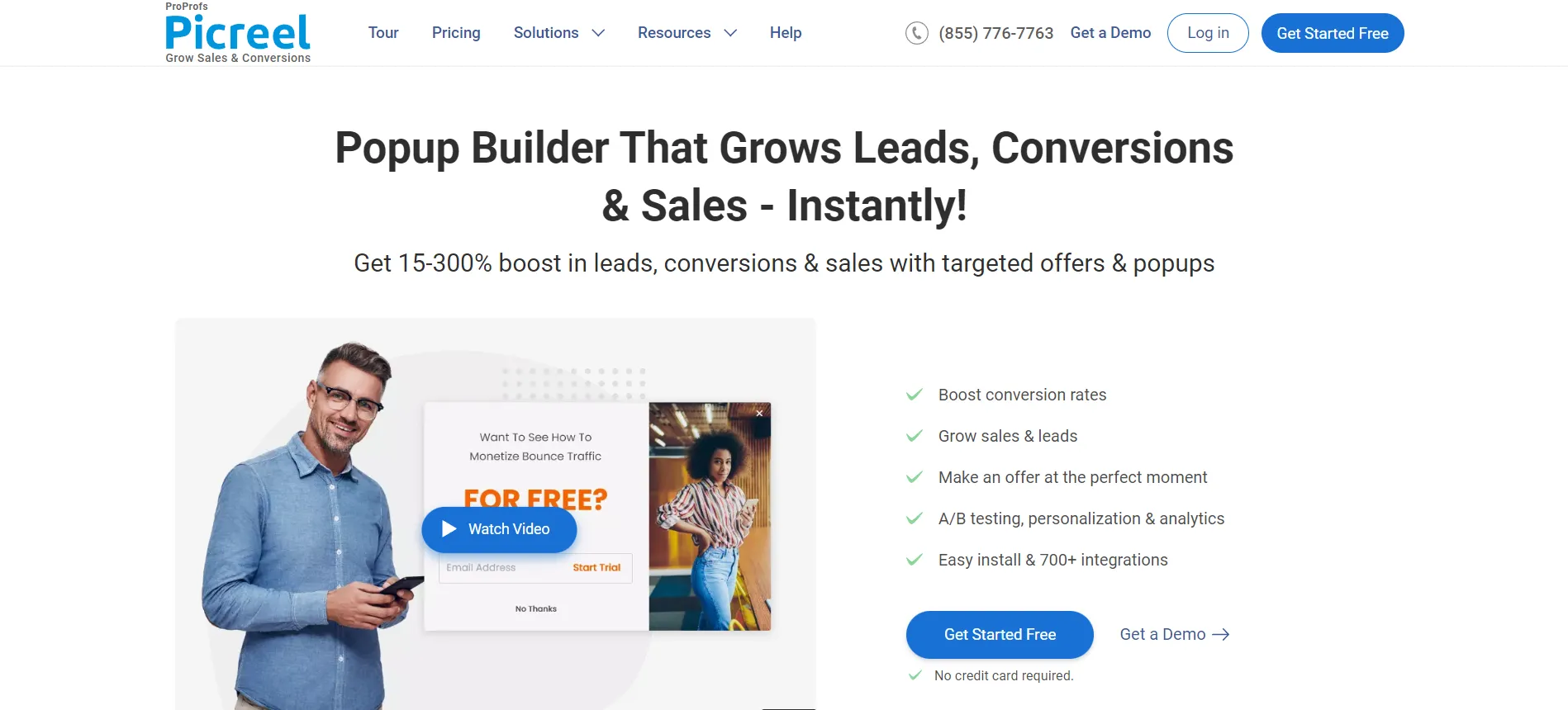
Picreel is another lead generation tool using which you can engage website visitors better with pop-ups and forms. The tool has a CSS pop-up editor with a large library of templates to help you with pop-up marketing. This tool works on desktops and mobile devices and helps businesses of all sizes. You can integrate a tool with more than 700 apps, and it has helpful customer support. The main features of this tool include:
- The drag and drop builder.
- Pre-built templates.
- Onsite targeting and segmentation options.
- A real-time analytics dashboard.
You also can perform A/B testing to understand which of your pops up is performing better.
Pricing – The basic paid plans start from $14 per month. The tool also has a free trial to offer.
5. HubSpot
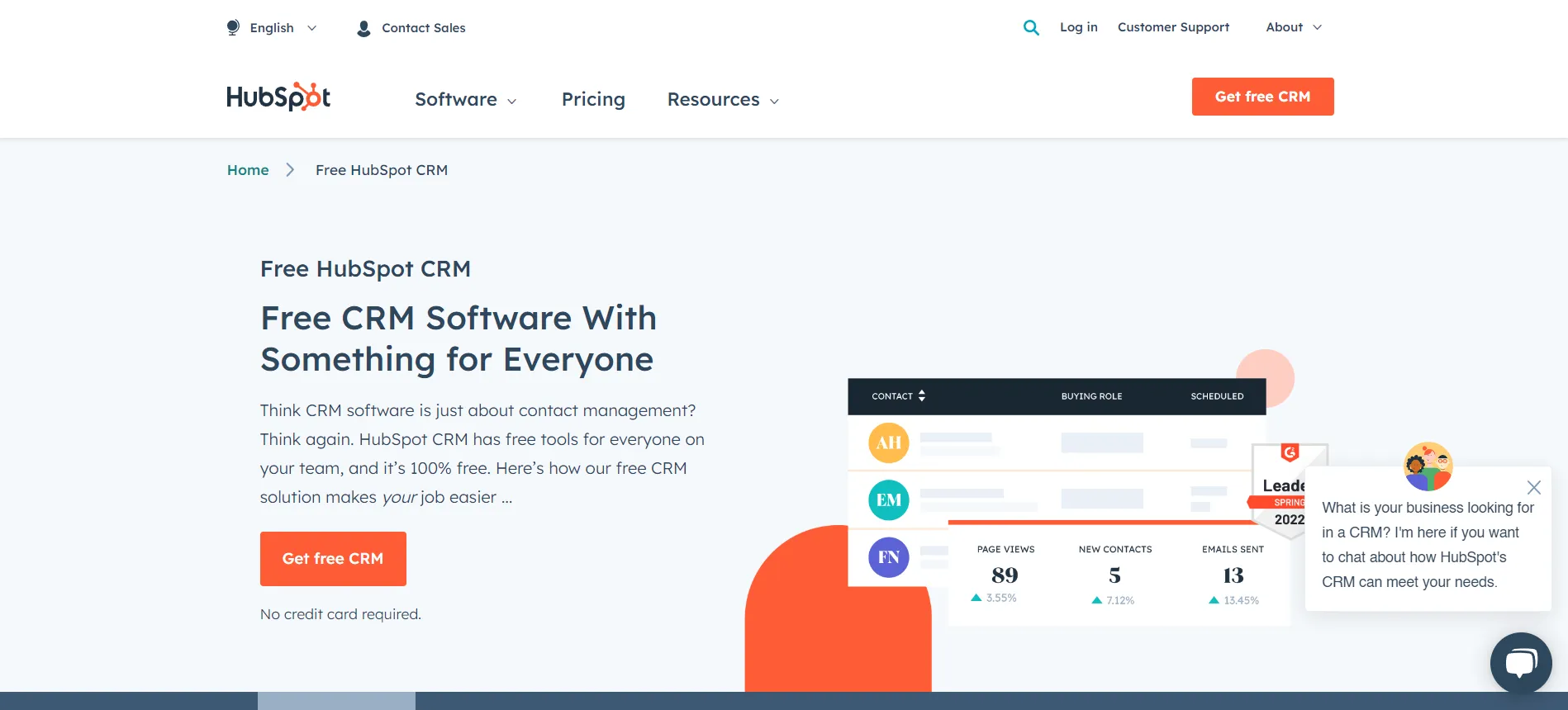
HubSpot is a marketing software that has tools to help businesses increase their traffic and generate more leads. You can also use it to market to those leads through email and ads. HubSpot is a feature-rich software that helps run marketing campaigns, attract visitors and convert them into customers. Using the tool, you can create automated workflows, handle social media and email campaigns and generate leads. You have a landing page with conversational bots and analytics that help with lead generation. This tool is ideal for small businesses.
Pricing – The paid plan ranges between $50 and $3200 a month.
6. LeadPages
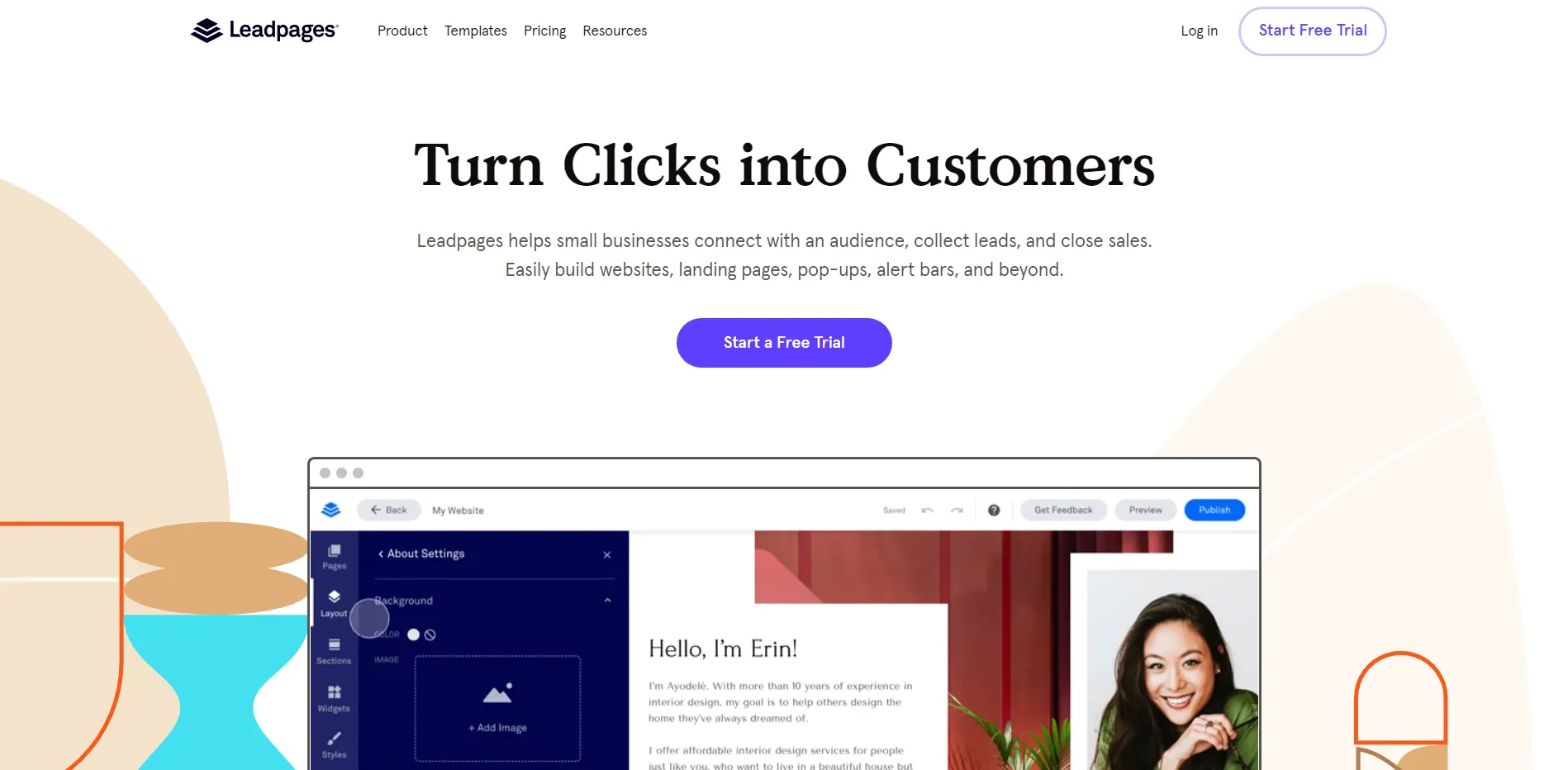
LeadPages is a lead generation tool that helps generate and confirm leads with the help of landing page popup boxes and alert bars. There are pre-built templates that you can customize easily. You can integrate the tool with Facebook Builder, which pulls content from your business page on Facebook and creates ads. The tool offers A/B testing to pick the version that performs well. You can integrate the tool with other marketing software easily. Using LeadPages, you can run campaigns, get a good ROI, and measure the campaigns’ performance.
Pricing – The paid plan starts at $25 per month billed yearly.
7. Aeroleads
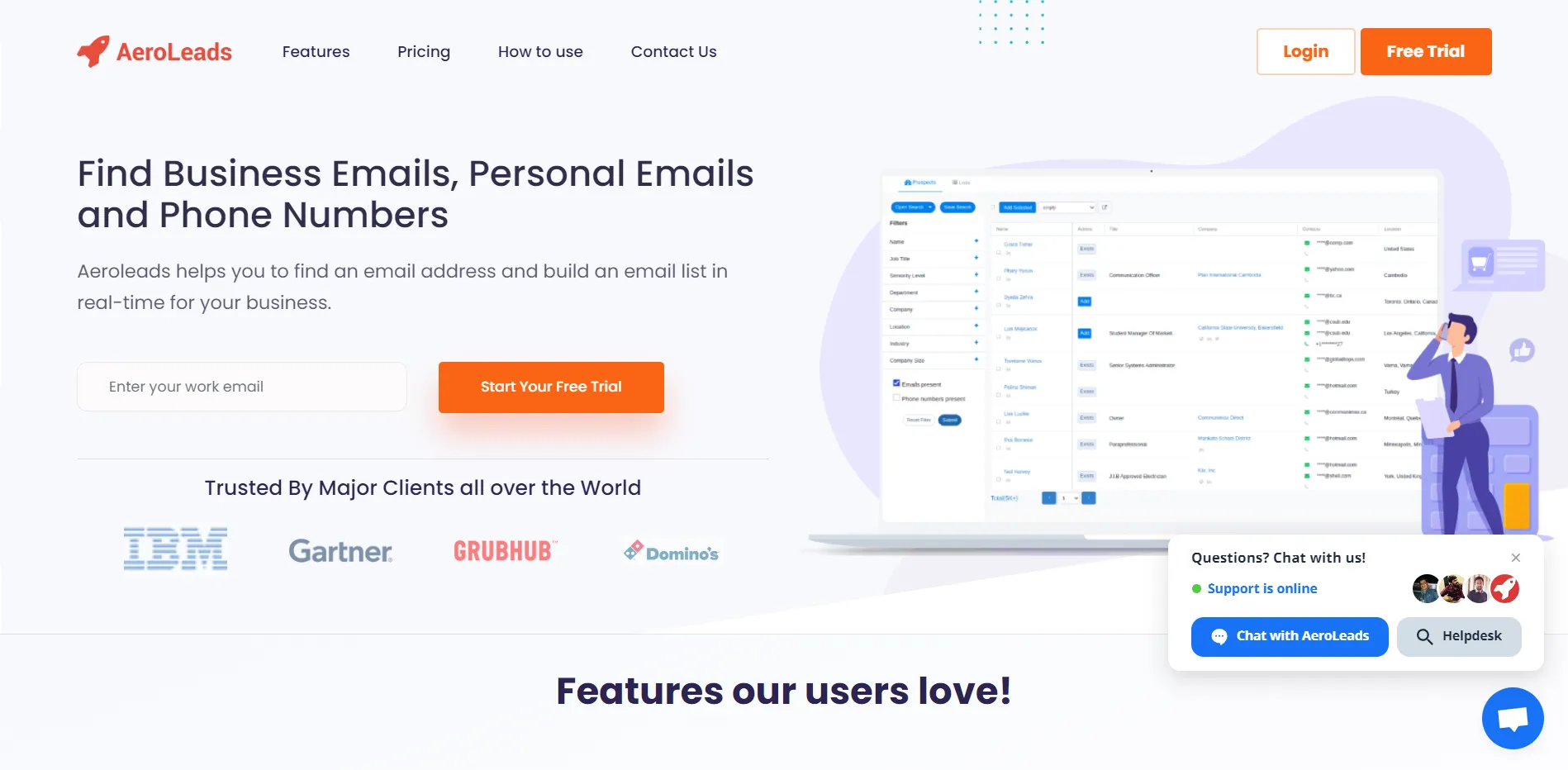
Aeroleads is a platform that helps in B2B lead generation. Find verified email addresses and contact numbers of a specific company. It is possible to get the prospect’s job role, location, email address, and more. You can integrate them with other CRM tools easily so that you don’t have to jump from one to another. It is also available as a Google Chrome extension making it more convenient for users.
Pricing – The paid plan starts at $49 per month.
8. LeadBoxer
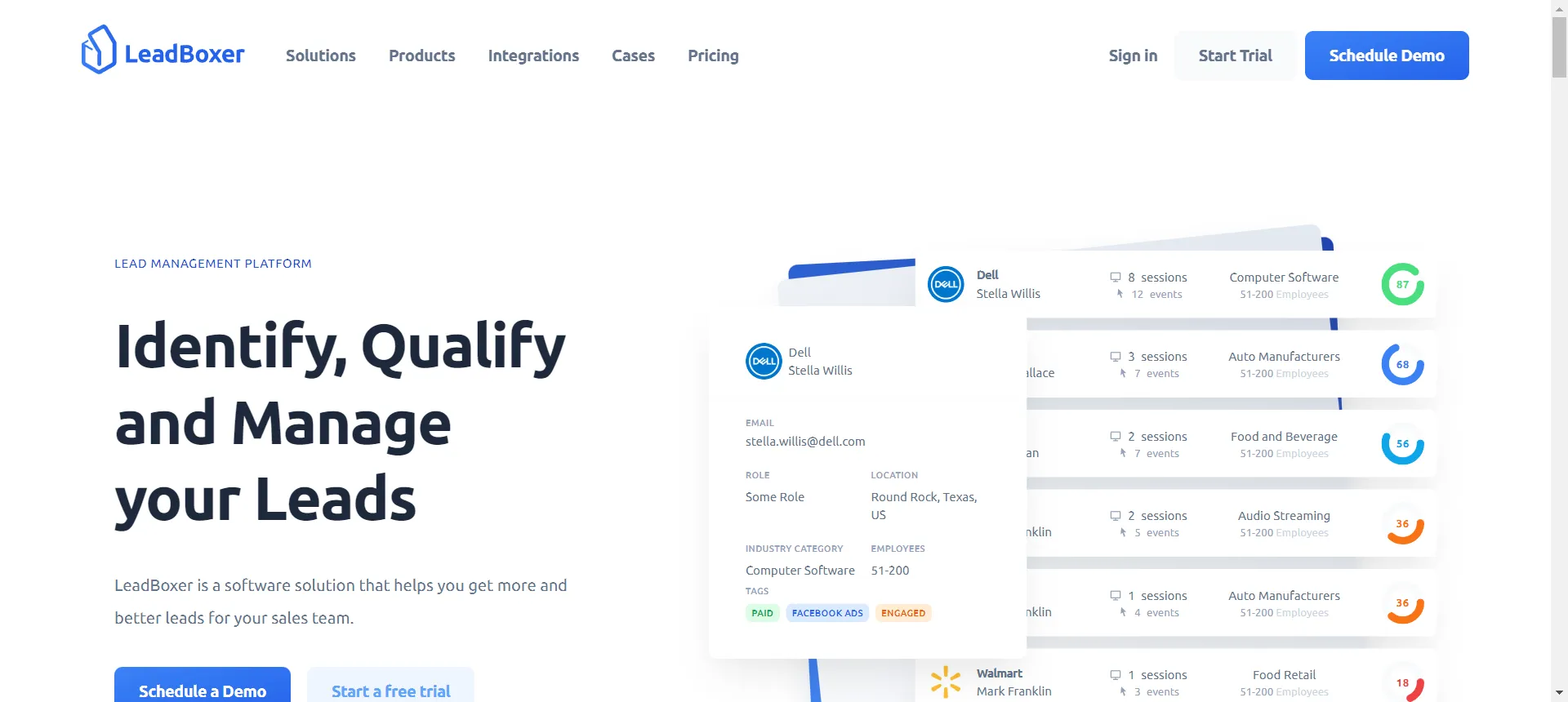
Using LeadBoxer, you can identify website visitors, track their entire journey, and qualify them based on the pre-set criteria. You can get a list of qualified leads every week or day in your inbox as per your preference. This tool helps you generate leads in one place and filter them based on the company’s size, geographical location, and many other pointers. Boxer integrates well with most other tools, such as HubSpot, WordPress, and Salesforce.
Pricing – The paid plan starts at $39 per month billed annually.
9. Marketo Engage
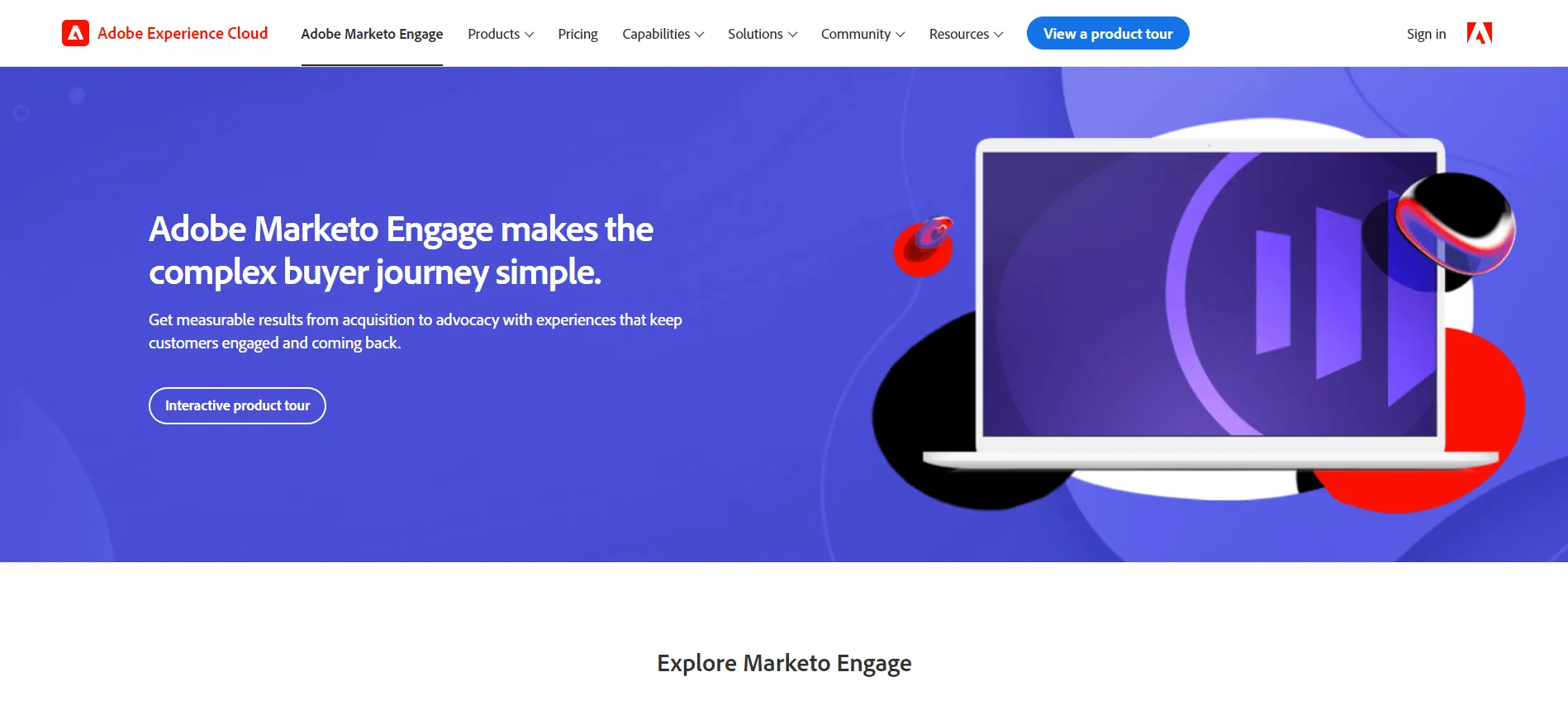
Marketo Engage is a lead management tool that helps marketers provide a great customer experience. It is now part of Adobe and is among the most sophisticated tools at present. It has email marketing, social marketing, project marketing, and lead nurturing features to boast of.
Pricing- You have to email them and place a request for a quote.
10. LeadFeeder
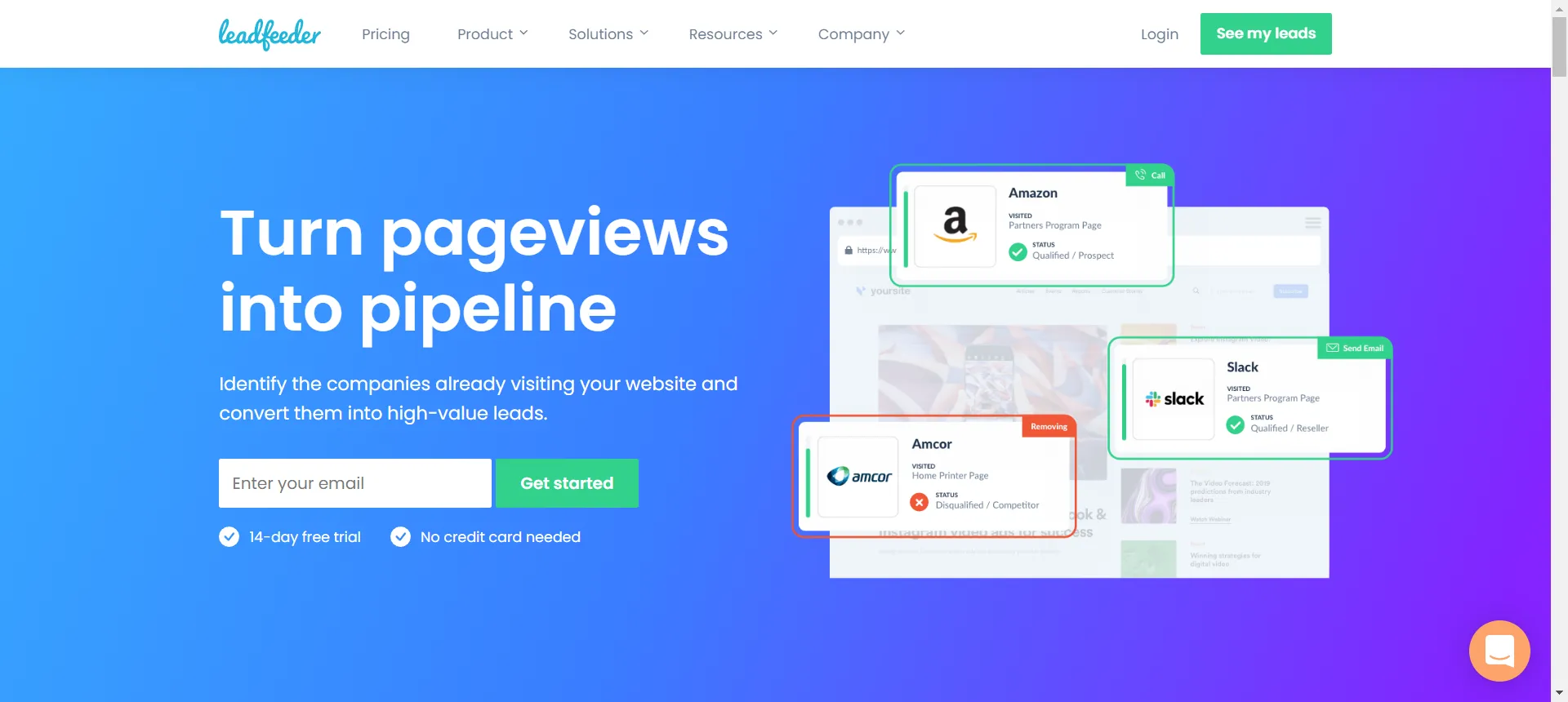
LeadFeeder helps you generate leads by helping you know the companies visiting your website, how they found you, and their interest. For this, they don’t even need to fill a form. With the help of Google Analytics, this tool identifies visitors and collects leads, and prioritizes them on the basis of what they viewed or clicked on on your site. You can get the contact information of respective companies to reach out to the decision-makers straightaway. Apart from that, you can integrate your account with the CRM tools you use, such as HubSpot or SalesForce. This will help streamline the process and save a lot of time.
Pricing – The paid plan starts at $53 per month.
11. LeadFormly
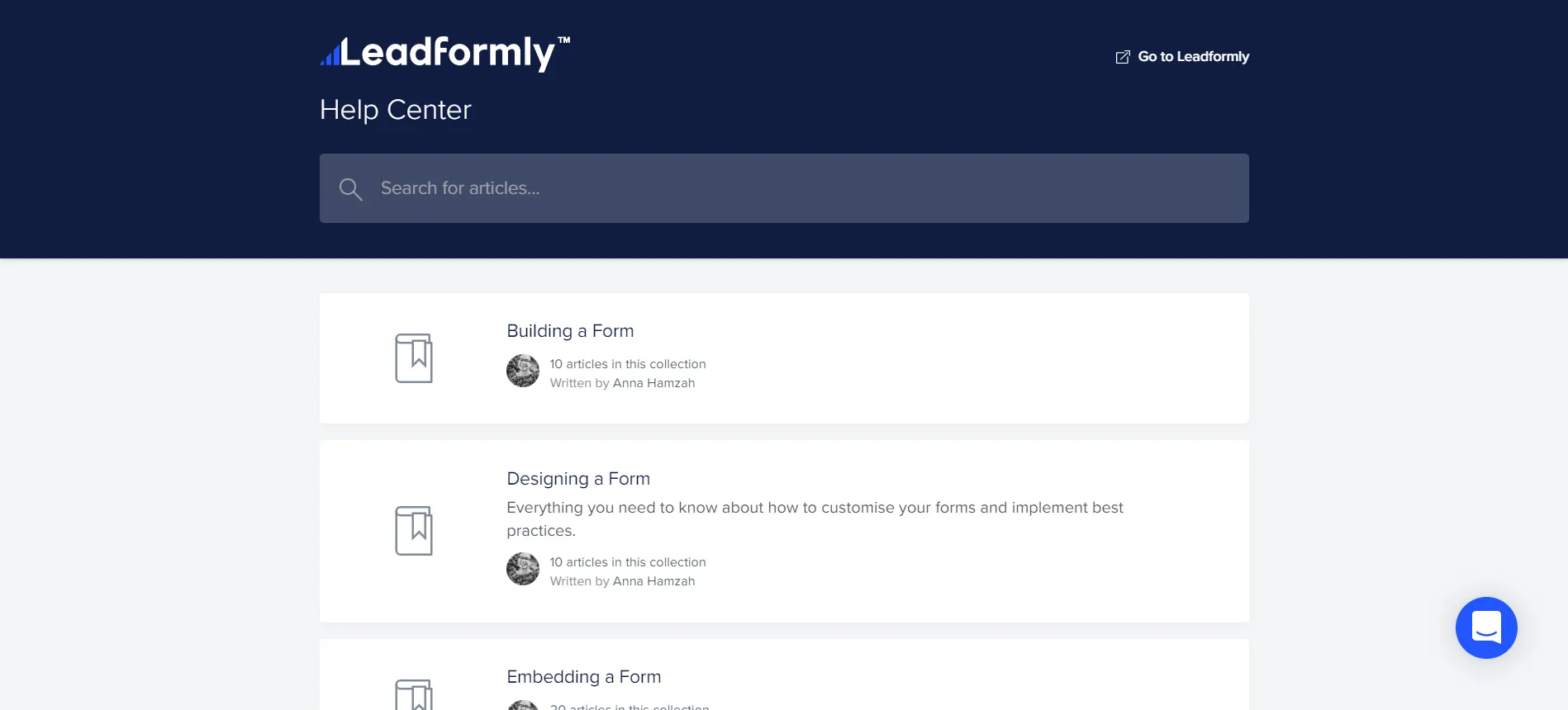
LeadFormly is a lead generation tool that helps you generate leads with interactive website forms. You can use its easy drag-and-drop builder and choose from more than 15 questions types with advanced conditional logic and spam blocker. There are templates available to choose from as well. You can integrate the tool with 1000 other tools to speed up your work process and save time. This tool is on the higher side when it comes to pricing, but it is worth the investment.
Pricing – The paid plan starts at $37 per month billed annually.
These are just a few lead generation tools. The list is obviously not exhaustive, as many other tools can help you capture leads effectively.
Now let’s move to the last part of this lead generation guide.
Lead Generation Trends To Watch Out For
Remember the lead generation trends we were talking about? It is time to look at some of the popular ones in this lead generation guide,
1. Lead generation going fully digital
You would agree that the pandemic has radically shifted the way you make sales. In the past, lead generation was typically through physical means such as attending trade shows, networking events, or cold calling. However, lead generation is now completely digital, and the world is okay with it as far as there is no exposure to any new coronavirus variant! Most in-person events have turned digital, which is the new norm.
Also, businesses are now turning to digital tools such as social media, email marketing, and SEO to generate leads. Social media is proving to be an effective way to reach potential customers and build relationships. Additionally, email marketing and SEO are helping businesses target their ideal customers and drive high-quality leads.
Businesses that embrace this shift towards digital lead generation will be well-positioned for success in the post-pandemic world.
2. Rise in video conferencing & Live chat
The rise of video conferencing and live chat as a lead generation trend is no surprise. In an age of digital communication, these tools are becoming increasingly important for businesses. Video conferencing allows potential customers to get a live, real-time look at the products and services offered. It also allows sales representatives to connect with prospects more personally, allowing for more meaningful conversations about the product or service.
Similarly, live chat allows customers to ask questions and get answers quickly without waiting for a response from a salesperson. This can help to speed up the sales process and turn prospects into paying customers faster than ever before. As more businesses adopt these lead-generation tools, it’s becoming clear that they are here to stay.
3. Increased use of chatbots
Chatbots are becoming increasingly popular in lead generation. For businesses, chatbots automate customer interactions and provide immediate answers to frequently asked questions. By responding quickly to inquiries, chatbots can help businesses build relationships with potential customers and increase their chances of converting them into paying customers.
Additionally, it is possible to train chatbots to recognize keywords and phrases that indicate interest in a product or service and forward the customer to a human customer service representative. This can help businesses generate leads at a much faster rate than traditional methods. Chatbots are a great way for businesses to leverage technology to increase their lead-generation efforts.
4. Rise of influencer marketing
The rise of influencer marketing is one of the leading trends in lead generation today. Influencers have become increasingly important to businesses, as they can reach a much larger audience than traditional marketing channels. They also have more credibility and authenticity, which can be crucial for building trust with potential customers.
Influencers can help businesses increase brand awareness, drive website traffic, and generate leads. By leveraging their influence, businesses can build relationships with potential customers and convert them into loyal customers. As the industry continues to grow, you must know how influencers can help you generate leads and capitalize on the trend.
5. Use of AI for generating leads
The use of AI for generating leads is undoubtedly one of the biggest trends in lead generation. Artificial Intelligence (AI) is used to identify potential customers and target them with personalized messages tailored to their interests and preferences. You can use AI to analyze large volumes of data quickly, allowing businesses to make better decisions about which leads to pursue and which to ignore. You can also use AI to automate mundane tasks, such as email outreach and lead nurturing, freeing up time for sales teams to focus on higher-value activities. These factors make AI a powerful tool for improving lead generation and sales.
With this we come to an end to this lead generation guide.
How to Use SalesBlink?
How To Get Started With Cold Outreach In SalesBlink?
You can launch your personalized & automated cold email sequence with followups in just a few steps in under 2 minutes.
Step 1: Create a SalesBlink Account
You can start using SalesBlink by signing up for the free 7-day trial.
It takes just a few seconds to create an account.
Step 2: Connect Your Email Account(s)
For sending cold emails with follow-ups on autopilot, you will need to connect your email accounts with SalesBlink.
You can connect unlimited email accounts & we already have in-depth guides for the following:
To connect your email to SalesBlink, you have to first enable IMAP and generate an app password if it is a Gmail account. Then, you can follow the following steps:
- Go to ‘Outreach’ > ‘Email Senders’.
- Click on ‘Add Sender’.
- In the pop-up, you can choose your email provider.
- Just follow the instructions to connect your email account
Note: You can connect unlimited email accounts with SalesBlink & enable Email WarmUp to boost email deliverability as well.
Step 3: Create a List & Upload Leads
Next, You will need to upload your list of leads to SalesBlink to automate cold outreach.
You can skip this step & just use the the sample list of leads (which already contains your email address as well).
- Go to ‘Outreach’ > ‘Lists & click on ‘New List’.
- Upload your CSV file with lead details.
- Map the columns in the CSV file with the data of leads as SalesBlink Variables to personalize your cold emails.
- Optionally, you can also verify the email addresses of leads that you are uploading.
- Save your list.
Note: You should verify email addresses to reduce bounce rates.
Step 4: Create & Launch your Sequence (with BlinkGPT AI)
Now that everything is set, you can launch your cold email sequence with BlinkGPT AI.
BlinkGPT AI is a fine-tuned LLM designed to help sales people in drafting high performance cold emails & personalized sequences.
Follow these steps to quickly launch your first sequence:
- Go to ‘Outreach’ and click on ‘Create New Sequence’.
- Select a sequence type, BlinkGPT AI Assisted or BlinkGPT AI Personalized.
- Enter the basic information to help BlinkGPT AI create a cold email sequence for your business.
- Select the list for the sequence and the email accounts to be used for sending cold emails.
- Schedule your cold email sequence.
- Launch your sequence. 🚀
Note: You can configure settings like sender rotation, working hours, pause sequence when lead replies and much more before launching your sequence.
Wasn’t that easy?
Now that your cold email outreach sequence is live, you track how your sequence is performing.
Step 5: Monitor your sequence & replies
With SalesBlink you can track opens, clicks, and replies to your emails and monitor your sequence from the dashboard or head over to the stats of any particular sequence.
Have two minutes to launch your automated cold email sequence? SignUp for SalesBlink.
Start Generating Leads Effectively With Our Lead Generation Guide
Lead generation is a challenge for any business, but with this, you can drive more customers your way! In this lead generation guide, we saw every aspect of generating leads in detail, and it will hopefully guide you in your journey. It is up to you to build a proper plan to generate leads for your business. What seemed to be a challenge will look like an effortless task once you have a lead generation process in place.
You will surely see a rise in the number of leads if you follow our Lead Generation Guide.
You can thank us once you start getting results!
FAQs
Lead generation is the process of identifying & acquiring potential customers or clients for a business. It involves creating content or campaigns to capture the interest of potential customers & to gather contact details such as emails.
The two types of lead generation are inbound & outbound lead generation. While the inbound method involves attracting leads through content marketing, the outbound method is all about active outreach.
To improve lead generation, utilize SEO and content marketing to increase your visibility online, use social media platforms, create lead magnets such as an eBook to attract leads. You can use email marketing as well.







